June 2015
Mitsubishi G4M1 “Betty”
Yokosuka MXY-
![]() Selected WW2 70th Anniversaries this month:
Selected WW2 70th Anniversaries this month:
Between 2009 and 2015, I have set myself a general modelling theme based on selected 70th Anniversaries from WW2.
Heavy bombing of the Japanese mainland from Allied land bases and from the sea continues throughout the month with devastating effects.
2 Jun 1945 – Aircraft from the USS TICONDEROGA attack Japanese air bases in an attempt to stop Kamikazes taking off.
5 Jun -
13 Jun – Australian troops liberate Brunei
21 Jun – Fighting on Okinawa is now over
26 Jun – The United Nations Charter is signed in San Francisco.
Mitsubishi G4M1 Type 1 Attacker Mk.11
Allied reporting name: “Betty”
721st Naval Air Group, 708th Attack Squadron. June 1945
10th Kamikaze Ōka Special Attack Group, Jinrai Corps, Ōka Unit
Hasegawa 1/72
www.gengriz.co.uk
Background Image: The distinctive brown propellor of a Japanese Aircraft at RAF Cosford
Have a look at my Adversaries pages for more Japanese WW2 Aircraft models
This is an older Hasegawa kit of the early Betty variant (the more recent issue is of the later G4M2 version), an aircraft type that served the Imperial Japanese Navy extremely well throughout the war. The kit is very basic, but well engineered and with very good parts fit.
The particular issue that I have used comes with a good selection of decals, covering
aircraft from various stages of the war, including the shock sinking of the PRINCE
OF WALES and the REPULSE in 1941 as well as one of the Japanese Surrender Delegation
aircraft. A comprehensive colour marking data sheet shows several other option,
unfortunately all written rather inscrutably in Japanese. The kit has raised rivets
-
The Betty was a highly successful bomber design that remained in production throughout WW2. Very fast for its time, its early successes were helped by its ability to outrun most Allied fighter aircraft.
With the arrival of the Seafire, Corsair and Hellcat in theatre this advantage was soon lost and the Betty’s light construction and lack of armour began to take their toll. Despite frantic attempts to add simple rubber protection to its fuel tanks, It quickly gained a reputation for catching fire with the lightest of hits on the fuel carrying wings.
As the war in the Pacific drew to its climax, Bettys were used in such diverse roles as as troop transports and heavy escort fighters as well as carrying rocket powered Ohka suicide bombers to attack the Allied fleet.
The Betty’s final duty came as transport for the Japanese surrender delegation on
the first leg of their flight to the Philippines to deliver the formal surrender
documents. The disarmed G4Ms were painted all-
Japanese Betty bombers conduct low level attacks against Allied ships off Okinawa.
(USN -
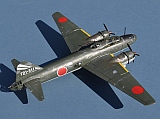

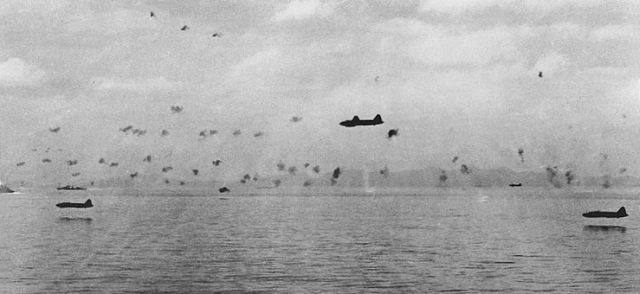
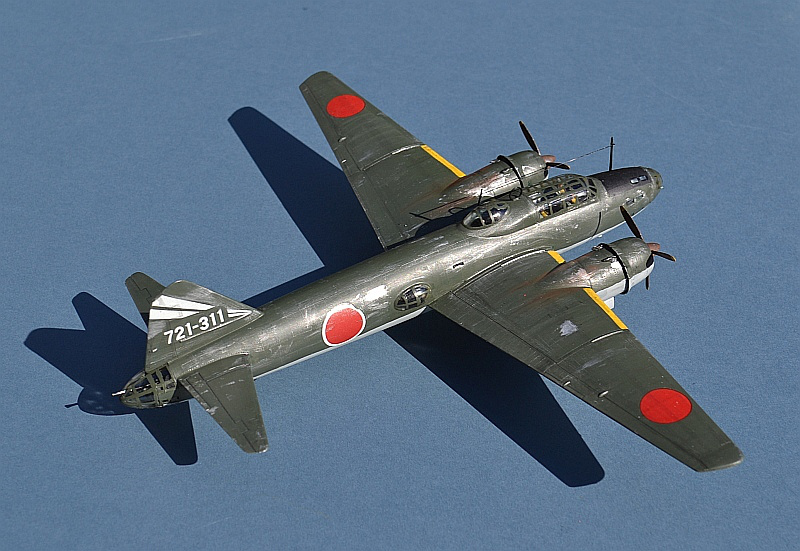

Like many Hasegawa kits, its cockpit and interior detail is non-
The main undercarriage is very simple and rather fragile; mine broke twice and ended up with some extra strengthening to ensure it could bear the models’s weight. Transparencies were thick but clear; a quick dip in Klear floor polish helped to enhance this.
The wire antenna uses a short length of Lycra thread. Decals were a little fragile,
probably reflecting the age of the kit. Unusually for Hasegawa, the white parts did
actually seem to be white. Paint is Humbrol enamel -
This is an old kit, but it builds well. Its main shortfall is the lack of internal detail, but otherwise it was a very satisfying build!
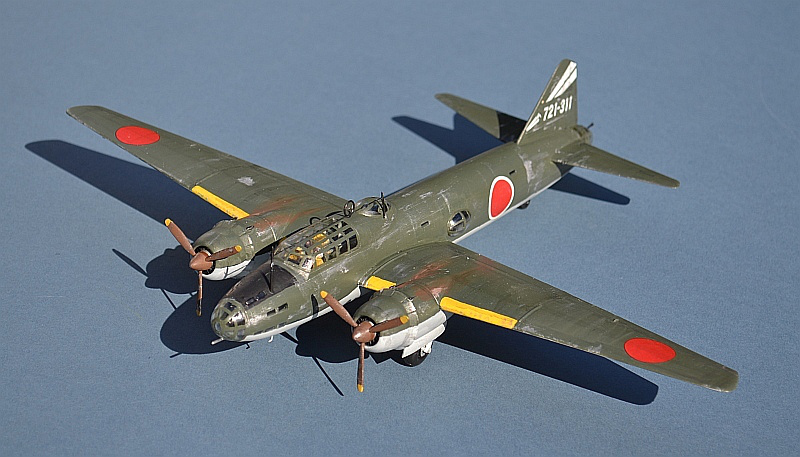
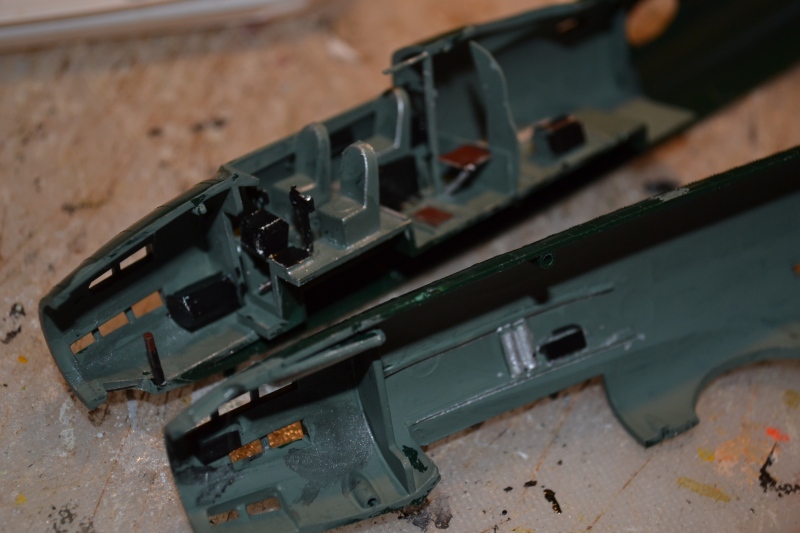
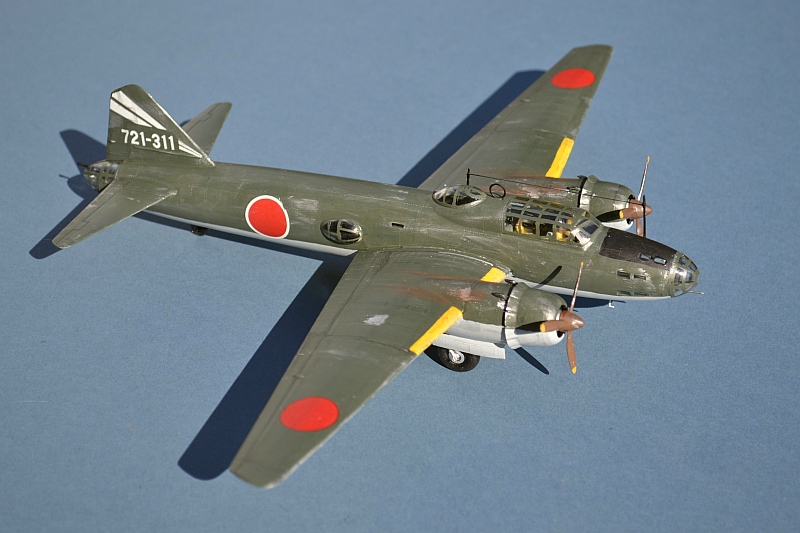

Unofficial Allied reporting name: “Baka” (fool/idiot)
721st Naval Air Group, 708th Attack Squadron. June 1945
10th Kamikaze Ōka Special Attack Group, Jinrai Corps, Ōka Unit
Hasegawa 1/72
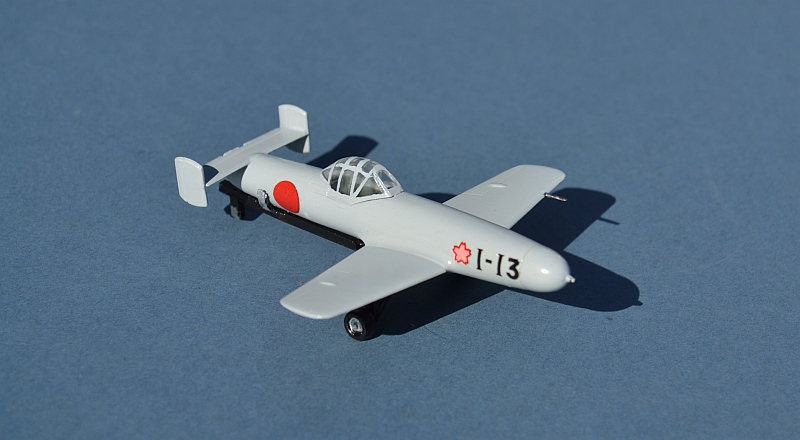

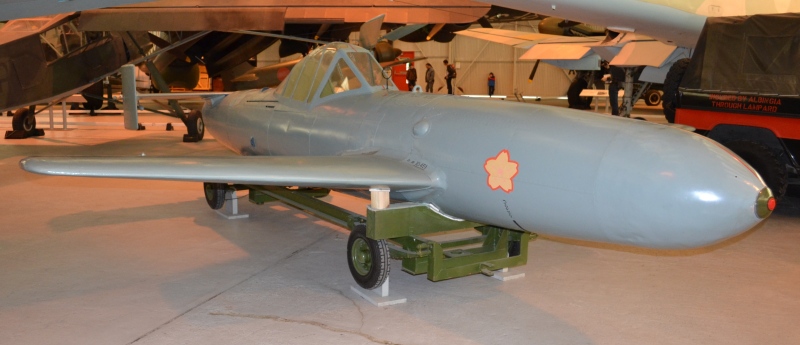
An Ohka dispalyed at RAF Cosford. The FAA Museum at Yeovilton also has an Ohka, which is currently undergoing forensic refurbishment to restore it to its original paint scheme
The Betty’s intended cargo was this Ohka (“Cherry Blossom”) rocket powered Kamikaze flying bomb. Carrying a 1.200kg warhead, it could achieve a top speed of over 570 Mph and would be dived into the decks of Allied warships . Over 750 were built and used mainly during the battles off Okinawa, where they proved of little value, with only a few successful hits on smaller ships, and no confirmed hits on any of the target capital ships or carriers. As with German attempts at radio controlled anti shipping missiles, the Ohka’s main weakness was the vulnerability of the heavily laden “Betty” carrying aircraft needed to get it with in range of its target.
